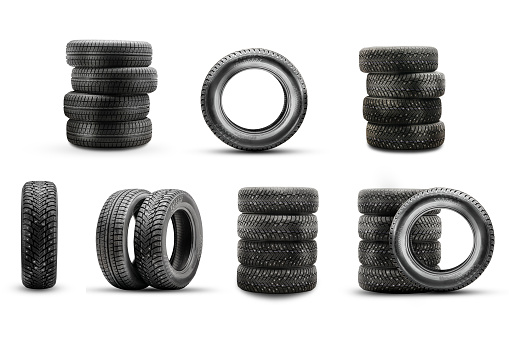Safety Precautions For Car Tires and its Wheel

Though not a major area of focus in tire handling, there are many safety precautions to be observed when handling tires while on the wheel. In fact, the wheel safety handling or rules are almost like rules for tire handling.
Top 9 Safety Precautions For Car Tires

Meanwhile, in a highlighted format, there are safety precautions expected when dealing with the tire wheels:
- Do not mix radial, bias ply, and belted bias tires on the same car except in emergencies.
- Normally install a new tire during repairs on the same axle replacing only one tire at a time and pair it with the texture having the most tread.
- Always follow the car manufacturers’ pressure recommendations. Radial tires appear to be under-inflated in comparison with bias-ply or belted tires at the same inflation pressure.
- Generally, rotate radial tires from front to rear and from rear to front. However,, certain manufacturers give an optional diagonal rotation plans for radial tires check specifications.
- Although tread designs may differ or seem the same, tires are built by different manufacturers with identical T.P.C. specifications.
- To remove tight wheels, tighten all lug nuts, then loosen each side as hard as possible. Or start the engine and rock the car from drive to reverse, allowing the car to move several feet each way before applying brakes hard. Never use heat to loosen tight wheels.
- Replace faulty wheels with new ones equivalent to original equipment wheels for load capacity, diameter, rim width, offset, and mounting configuration.
- Tighten wheel nuts in sequence and to proper torque to avoid bending the wheel or brake drum or rotor.
- Follow the equipment manufacturer’s instructions for checking wheel and tire assembly balance and alignment to ensure maximum tire life.
TOP 6 CAUSES OF WEAR ON TIRES AND THEIR TYPES

Excessive or uneven tread wear results from underinflation, rapid stops, fast acceleration, misalignment, and/or unbalanced conditions.
Road surface condition also affects tire life. Gravel roads and rough finished concrete will wear tires quickly. Smooth concrete and asphalt surfaces help in promoting maximum tire life.
The normal wearing condition causes the tire tread to be reduced evenly and smoothly.
There are many types of wear peculiar to car tires, however, these few highlighted below seem to be the most frequently occurring in tires:
- Spotty wear: this wear pattern usually results from a combination of conditions, including the design of the particular tire tread. Under inflation and incorrect camber are the main factors, along with excessive term or foe-out.
- Overinflation: this causes tires to wear excessively at the center of the tread surface. In addition, there is usually a little wear on the outer edges of the tire. This causes early failure at the center ribs and breaks in the tire sidewall.
- Underinflation: is characterized by excessive wear on the two tread ribs adjacent to the inner and outer shoulder ribs. In many cases, inflation also causes spotty wear.
- Toe-in and toe-out wear: the amount of toe-in and foe-out is one of the most important factors governing tire wear. Unless toe-in is correct, the tires will have a scrubbing action on the road surface, and excessive wear will result. Excessive foe-in produces a feather-edge on the inner edges of the tread ribs, which can be felt by reverse. The feather edge is produced on the outer edges of the tread rib.
- Camber wear: excessive camber will produce wear on one side of the tire tread. If there is too much positive camber, the tread wear will be on the outer ribs. If the camber is negative, the wear will occur on the inner side of the tire tread. If there is excessive wear on both inner and outer areas of the thread. It probably was caused by excessive skidding on turns.
- Cornering wear: when considering any tire thread wear condition and what caused it, remember that excessive or uneven wear usually results from a combination of conditions. Tires wear at a different rates on all four wheels due to driving conditions, the weight of vehicle, power on the driving wheels, the crown of the road, alignment of wheels, overloading the vehicles, tire inflation, and probably most important of all, driving habits of the person behind the steering wheel. Since, fast starts, quick stops, high speeds, and fast turns, etc. do take their role in the overall life of the tire. Therefore, conservative driving habits promote maximum life of the tire and decrease expenses of the overall vehicle maintenance.


